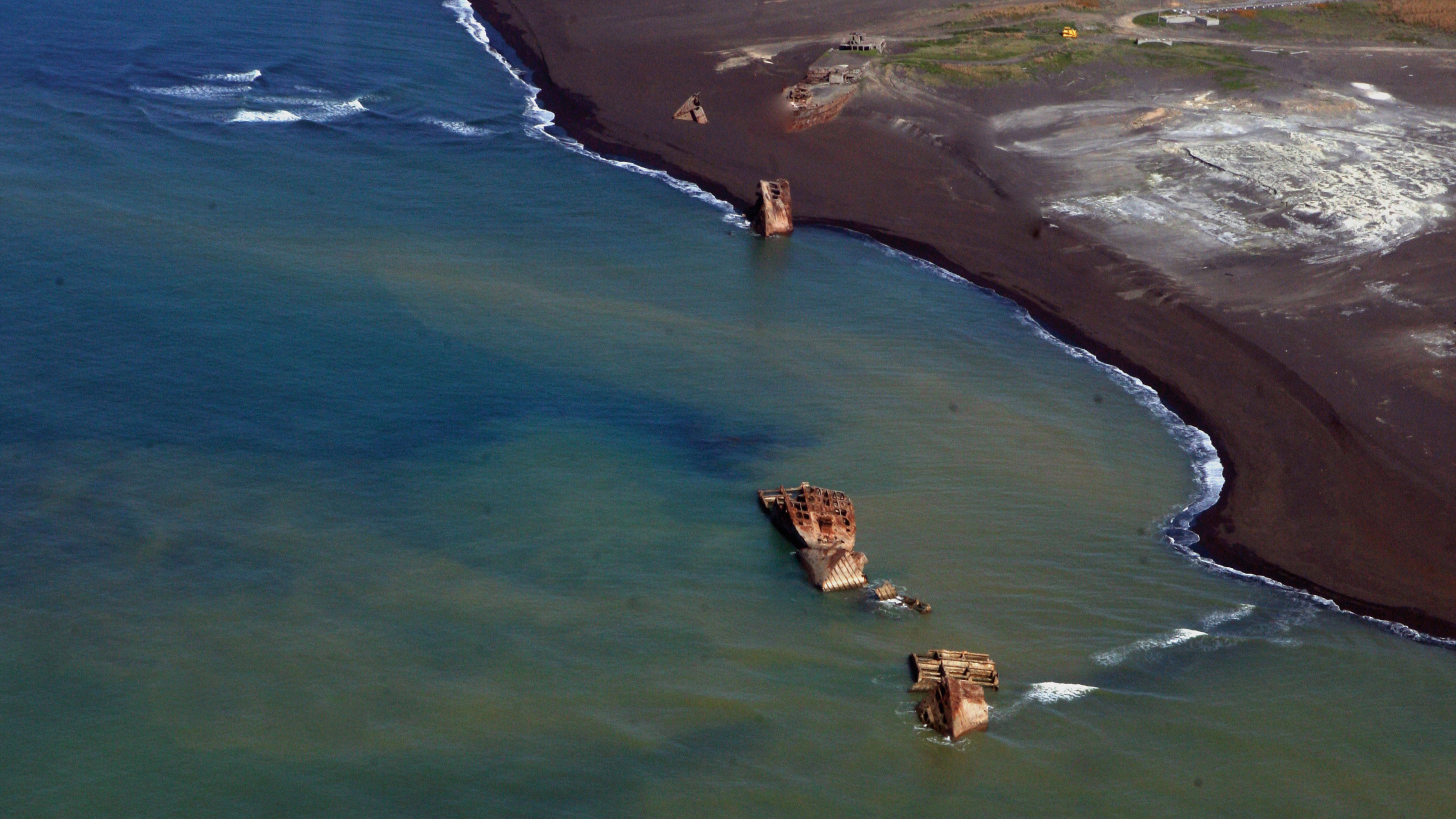30/10/2021 Giappone, Honshū, Kantō, Tokyo
“If you ever come across anything suspicious like this item, please do not pick it up, contact your local law enforcement agency for assistance”
By Ben Turner
Seismic activity from an underwater volcano near Tokyo has raised two dozen “ghost ships” — sunk after one of World War II’s most famous battles — from the bottom of the Pacific Ocean. Helicopter footage from Japan’s All Nippon News (ANN) captured the 24 ships washed ashore on the western side of the island of Iwo Jima, which is roughly 760 miles (1,200 kilometers) south of Tokyo, after they were pushed up, along with the seabed, by the underwater volcano Fukutoku-Okanoba. U.S. forces sank the ships during the Battle of Iwo Jima in 1945. One of the bloodiest battles in World War II, the 36-day assault saw roughly 70,000 U.S. Marines fight around 20,000 Japanese soldiers hiding out in bunkers within the island’s volcanic rocks. By the end of the battle, 20,000 marines had been wounded and nearly 7,000 killed. Nearly all of the Japanese soldiers, save for 216 captured alive, were killed in action. The smashed, sea-bleached wrecks are the remnants of transport vessels that were captured by the U.S. Navy and deliberately scuttled in the aftermath of the battle. As Iwo Jima had no port, the ships were sunk parallel to the shoreline to form a breakwater — shielding both weapons and troops from oncoming waves as they were unloaded onto the island, according to the US National Archives. Fukutoku-Okanoba has been erupting underwater since August. Besides pushing the ships, and the seabed they are resting upon, into view, the seismic activity produced by the volcano has led to the emergence of a small, crescent moon-shaped island from the sea. Formed from pumice and volcanic ash, the island is expected to vanish soon due to erosion, according to Setsuya Nakada, the director of the Japanese government’s Center for Integrated Volcano Research.
Photo-Source: livescience.com
警察は「不発弾を見つけたら近づかず連絡してほしい」と話しています。
Biography of a Bomb
Dear editors, Biography of a bomb is aimed at highlighting the danger caused by unexploded bombs. Moreover, the most important aspect is that we work completely non profit, raising awerness about this topic is what drives us. We apologize if we make use of pictures in yours articles, but we need them to put a context in how findings are done. We will (and we always do) cite source and author of the picture. We thank you for your comprehension





